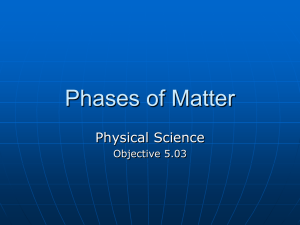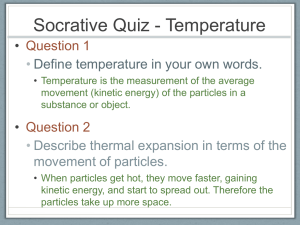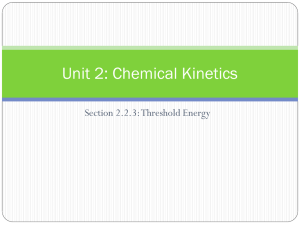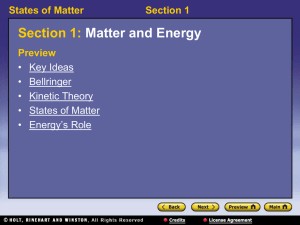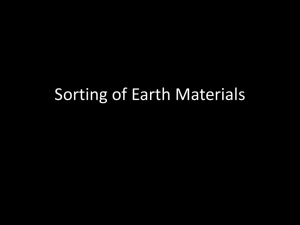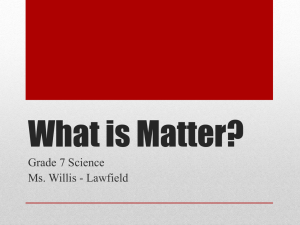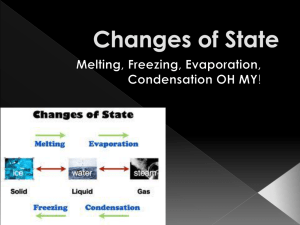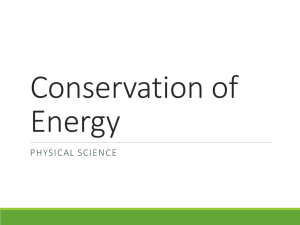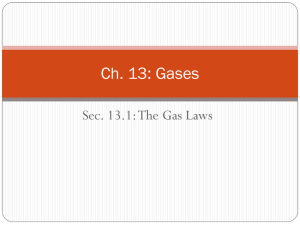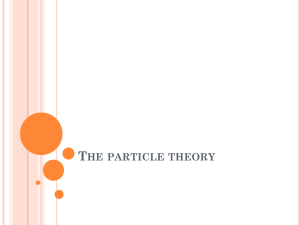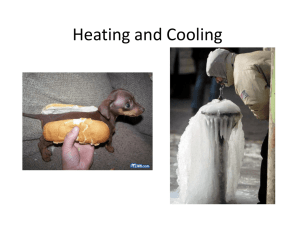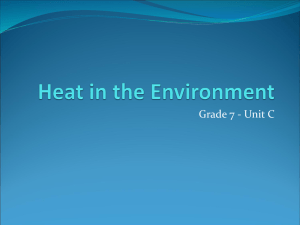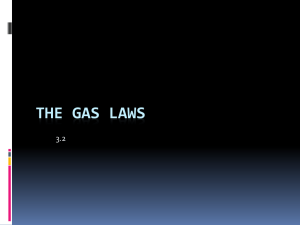Grade 7 Science - Livingstone High School
advertisement
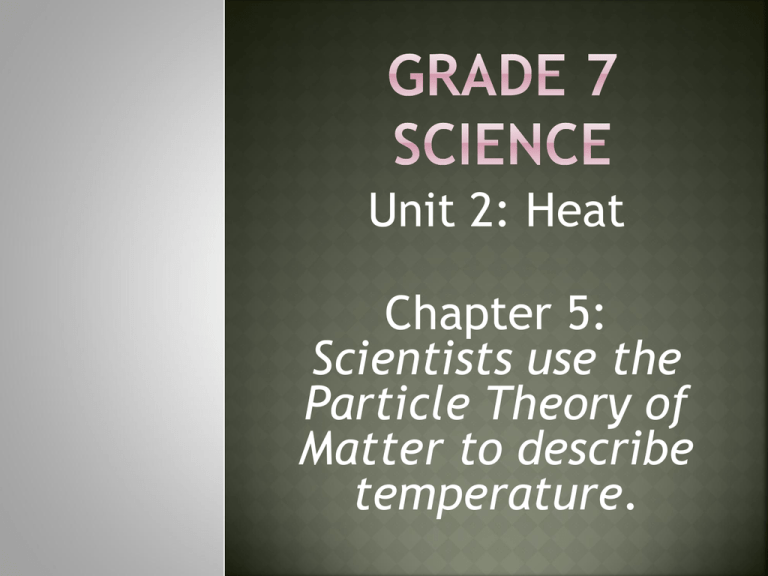
Unit 2: Heat Chapter 5: Scientists use the Particle Theory of Matter to describe temperature. Anything that takes up space and has mass. All matter is made up of tiny particles. These particles are always moving – they have energy. The more energy they have, the faster they move. There is space between all particles. There are attractive forces between the particles. The particles of one substance are the same but differ from another substance. Temperature: The average energy of the particles of a substance. “All particles in a glass of room temperature water are moving at the same speed.” Explain whether this statement is true or false. The energy of movement. Temperature is then a measure of the average kinetic energy of the particles of a substance. Each color represents a particle of a varying speed. The average of these energies would be the temperature. Average Kinetic Energy Page 137 Liquid Solid Gas THREE STATES OF MATTER... A COMPARSION SOLID LIQUID GAS VOLUME Fixed Fixed Expands to fit the container SHAPE Fixed Takes the shape of the container Takes the shape of the container PARTICLE ARRANGEMENT Strong attractive forces – closer together Moderate attractive forces – loosely held together Weak attractive forces - very loosely held together PARTICLE MOVEMENT Vibrate Slide past one another Very quickly Expansion Contraction Increasing Decreasing the volume the volume of a of a substance substance When the particles are heated, they gain energy, move faster, spread out and take up more space thereby increasing their volume. When the particles are cooled, they lose energy, move slower, move closer together and take up less space thereby decreasing their volume. Why do we need to be concerned with expansion and contraction in the above pictures? 1. Activity 5-2 B “Bulging Balloons” 2. Activity 5-2 C “Race to for the Top” 3. Activity 5-2 D “ Expanding Solids” Pages 151 - 155 Deposition Blue = add heat Red = lose heat Adding heat energy, increases the kinetic energy and therefore the temperature. The particles break their attractive forces with their neighbouring particles when kinetic energy is increased. Eventually, the kinetic energy will be great enough to break the attractive forces holding the particles together thereby changing state. The opposite is true if heat energy is decreased. Activity 5-3C “The Plateau Problem” Page 166 (7)

